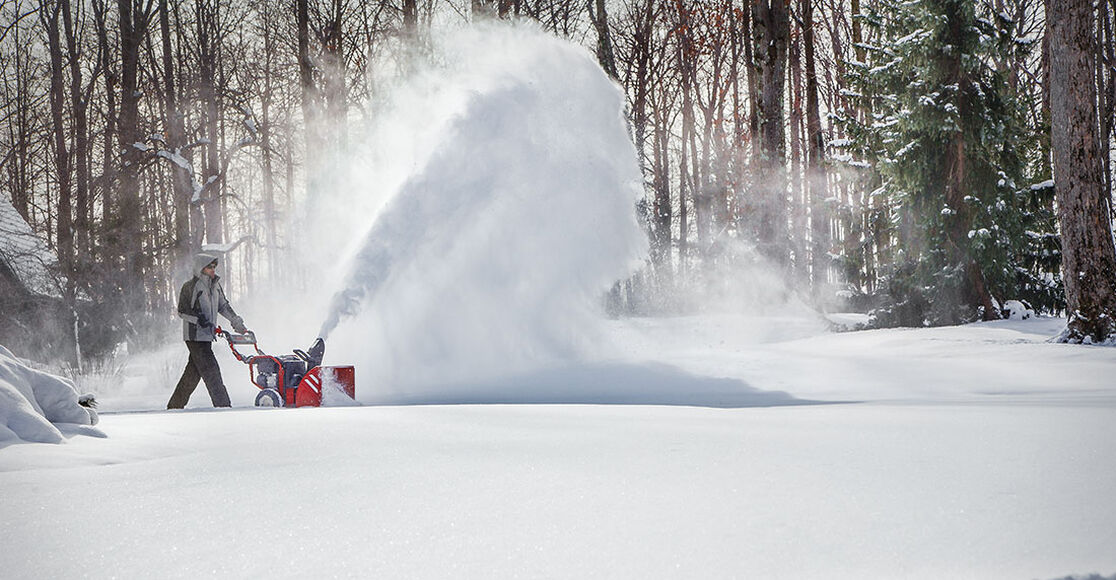The winter season has officially kicked in, which means the time spent clearing your driveways and walkways of snow and ice is upon us.
How much time you spend outside and the tools and equipment you use to remove snow often depend on where you live, but the process can be made easier no matter your location with the right snow blower and snow removal techniques.
Here are a few tips to improve your snow removal routine, so you can keep those critical areas snow-free with ease.
Consider Your Lawn When Applying Salt or Chemicals
Snow and ice can damage your lawn, but so can the products used to remove them. The most common – and generally the least expensive – chemical used for removing snow is sodium chloride (rock salt).
When salt is used near your lawn, your soil absorbs it. Once in the soil, the salt absorbs water that would usually be available to the grass roots. Even if your lawn is receiving adequate water, a high concentration of salt can create drought-like conditions for your grass.
Turf damage is usually the worst along the edges of the lawn – close to where salt has been spread to help remove snow from the driveway, walk or road. Some of the most severe damage results from commercial salt treatments on city streets. You can’t control when, where or how your city applies de-icers. However, you can minimize your use of them when you are removing snow.
If your soil becomes concentrated with salt during the winter, spring rains may be enough to flush it out. Otherwise, you may need to irrigate your lawn with clean, sodium-free water. Before you irrigate, be sure that your lawn drains properly. Waterlogging your soil can be as harmful to your turf as a high concentration of salt. Core aeration will improve your lawn’s drainage and soil fertility.
Turf damage is usually the most evident at the onset of spring when your lawn is greening up. If you notice thin, bare or dead spots, you should consider lawn reseeding. Minimizing exposure to salt and other de-icing products will make your spring lawn care easier.
Use the Right Equipment
To prevent turf damage, it’s best to rely on nonchemical methods of removing snow. Troy-Bilt snow blowers will help you clear snow efficiently and safely. Keep in mind that the longer you allow snow to sit, the more difficult it will become to clear.
If you use de-icer before clearing the snow, apply just enough to help loosen the accumulation. Avoid blowing or piling salted snow onto your – or your neighbor’s – lawn. It’s best to apply de-icer after you remove snow from your driveway or sidewalks.
Being familiar with your yard and the snowfall patterns in your area will help you choose the right snow blower for the job – especially if you’re purchasing a snow blower for the first time. While three-stage snow blowers like the Vortex 2490 Snow Blower are best for extremely heavy, wet snow and larger clearing areas, two-stage blowers like the Storm 2410 Snow Blower are better suited for medium to large cleanup jobs that consist of heavy snow. If your area typically receives light snow accumulation, a single-stage blower like the Squall 208EX Snow Blower can accomplish the task.
When it comes to shoveling small, tight areas like your porch and steps, keep in mind packed snow is harder to move, so try to shovel as frequently as possible. Invest in a wide-shaped pusher shovel with an aluminum blade to remove snow that has frozen to the pavement.
Mark Your Driveway
Since it can be difficult to gauge where certain areas of your yard begin and end after a heavy snowfall, it’s not uncommon for areas of your lawn and even your plants to become damaged from snow removal. To help protect your yard and keep your snow blower on track, it’s best to line the edges of your driveway and walkways with reflector stakes before the first major snowfall. The stakes serve as guides when using your snow blower and help safeguard nearby grass, plants and hedge roots. Lining your driveway also helps professional snow plow removers that are unfamiliar with the landscape from uprooting your grass and plant beds.
